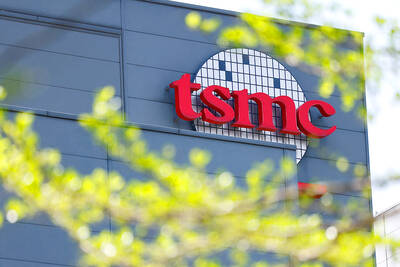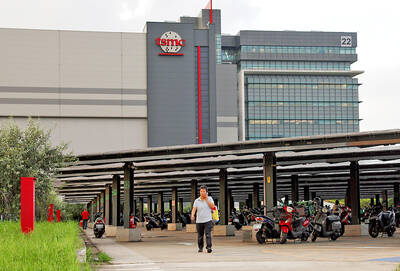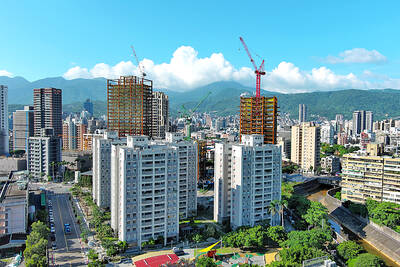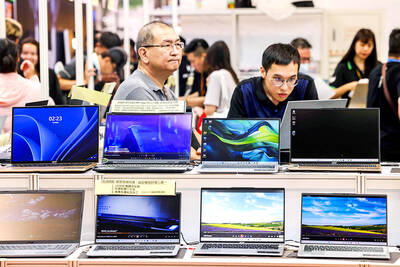Hsinchu City ranked first among Taiwan’s administrative regions for the fourth consecutive year in terms of residents’ average annual household income, with income growing 35 percent annually to NT$1.52 million (US$48,820), Ministry of Finance income tax data from 2021 showed.
Hsinchu County was second for the first time with NT$1.395 million, according to the statistics, which covered 6.44 million households nationwide.
Hsinchu City and Hsinchu County were the top two, as they are home to many profitable Taiwanese tech heavyweights, such as Taiwan Semiconductor Manufacturing Co (台積電), and tech professionals tend to live near their workplaces.
This connection is indicated in the ranking of village wealth — Guanxin Village (關新) in Hsinchu City ranks first among all villages in terms of residents’ annual income.
Located in the city’s East District (東區), Guanxin is home to many tech professionals who work in the nearby Hsinchu Science Park.
Guanxin reported an average household income of NT$3.74 million, up 24 percent from NT$3.01 million in 2020, the data showed.
The median annual income of Guanxin residents was NT$2.92 million, which was also the top nationally.
Taipei fell one place to third, with residents making NT$1.332 million on average, the data showed.
Yongfu Village (永福) in Taipei’s Shilin District (士林) was the nation’s second-richest village with an average annual household income of NT$2.963 million.
However, the median income of Yongfu residents was NT$665,000, indicating an uneven wealth distribution, the data showed.
Lienchiang County, Taoyuan City and New Taipei City were fourth, fifth and sixth respectively, with their residents making NT$1.03 million, NT$989,000 and NT$987,000 respectively, the data showed.

TECH TITAN: Pandemic-era demand for semiconductors turbocharged the nation’s GDP per capita to surpass South Korea’s, but it still remains half that of Singapore Taiwan is set to surpass South Korea this year in terms of wealth for the first time in more than two decades, marking a shift in Asia’s economic ranks made possible by the ascent of Taiwan Semiconductor Manufacturing Co (TSMC, 台積電). According to the latest forecasts released on Thursday by the central bank, Taiwan’s GDP is expected to expand 4.55 percent this year, a further upward revision from the 4.45 percent estimate made by the statistics bureau last month. The growth trajectory puts Taiwan on track to exceed South Korea’s GDP per capita — a key measure of living standards — a

READY TO HELP: Should TSMC require assistance, the government would fully cooperate in helping to speed up the establishment of the Chiayi plant, an official said Taiwan Semiconductor Manufacturing Co (TSMC, 台積電) yesterday said its investment plans in Taiwan are “unchanged” amid speculation that the chipmaker might have suspended construction work on its second chip packaging plant in Chiayi County and plans to move equipment arranged for the plant to the US. The Chinese-language Economic Daily News reported earlier yesterday that TSMC had halted the construction of the chip packaging plant, which was scheduled to be completed next year and begin mass production in 2028. TSMC did not directly address whether construction of the plant had halted, but said its investment plans in Taiwan remain “unchanged.” The chipmaker started

MORTGAGE WORRIES: About 34% of respondents to a survey said they would approach multiple lenders to pay for a home, while 29.2% said they would ask family for help New housing projects in Taiwan’s six special municipalities, as well as Hsinchu city and county, are projected to total NT$710.65 billion (US$23.61 billion) in the upcoming fall sales season, a record 30 percent decrease from a year earlier, as tighter mortgage rules prompt developers to pull back, property listing platform 591.com (591新建案) said yesterday. The number of projects has also fallen to 312, a more than 20 percent decrease year-on-year, underscoring weakening sentiment and momentum amid lingering policy and financing headwinds. New Taipei City and Taoyuan bucked the downturn in project value, while Taipei, Hsinchu city and county, Taichung, Tainan and Kaohsiung

Micro-Star International Co (MSI, 微星科技) is expanding notebook computer production in India after partnering with Indian electronics maker Syrma SGS Technology Ltd late last year, as the Taiwanese company seeks to tap into the local market. MSI also plans to manufacture some of its new gaming PCs powered by Nvidia Corp’s RTX 50 graphics cards in India, while adding more advanced and design-focused PCs and notebooks at Syrma’s plant in Chennai, a source told the Taipei Times yesterday on condition of anonymity. MSI’s deployment in India is driven not only by cost advantages, but also by India’s rapidly expanding consumer market and